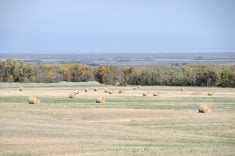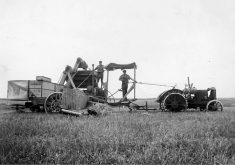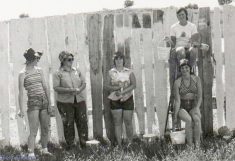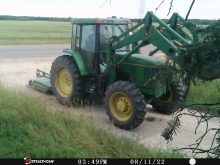There are fewer Canadian farmers, and those over 55 still outnumber their younger peers, but the latest Census of Agriculture shows a slightly larger number of those 35 and under now farming too.
Statistics Canada takes an extensive look at farmers and farm practices every five years, and the results of the 2016 census were released last week. It shows the number of operators under age 35 years increased for the first time since 1991.
- Read more: Ag census logs more younger and female farm operators
Read Also

Boosting productivity could mean historic farm revenues
FCC report finds increasing productivity in the Canadian agriculture sector could mean $30 billion in farm revenue in the next decade
Manitoba stood out as having the largest proportion of those younger operators, as well as the youngest population of farm operators outside Quebec. Just over one in 10 Manitoba farmers (10.8 per cent) are now under 35.
“That’s really good news. That is our future and it means there’s growth going on inside Manitoba,” said Keystone Agriculture Producers Dan Mazier. He attributes it to a few good years in farming recently, plus the effort put into succession planning.
This most recent census was the first time farmers were asked if they had a written succession plan and 8.1 per cent of farms in Manitoba reported having one.
“There’s optimism and there’s generational change happening in agriculture,” Mazier said.
“I think more senior operators are getting a signal that they need to do something to put new energy into the system, so guys are getting out and new ones are coming in.”
But while a new generation evidently wants in, other census data showing profitability and the cost to farm say a lot about the risk we expect this younger generation to take on, he said.
Larger and more valuable farms
Nationally, the value of agricultural land and buildings increased by 37.5 per cent between 2011 and 2016, but substantially more in Manitoba at 64.5 per cent.
Meanwhile, farm profitability is unchanged from 2010. On average, for every dollar in sales, farms incurred 83 cents in operating expenses in 2015.
Mazier said there needs to be more support for business risk management to encourage more young people to take on farming.
“We’re risking more,” Mazier said. “And that is the concern as these young producers come in. A lot of these entities that are just starting up… they’re the vulnerable ones. We’re asking them to take on a bunch of debt and a bunch of risk.”
Overall decline in farmers
There has been an overall decline in the number of farm operators in Canada since the last census. It counted 271,935 farm operators in 2016, 21,990 fewer than in 2011.
In Manitoba the number dropped by 9.8 per cent to 20,140 farm operators in 2016.
Nationally, 28.7 per cent of those operators are women, a slight increase since the last census. Manitoba’s figure was virtually unchanged at 23.8 per cent.
Meanwhile 44.4 per cent of all operators in Canada have off-farm work, “usually as a means of supplementing their total income,” the StatsCan report said. In Manitoba that number was slightly lower at 42.9 per cent, down from 46.2 per cent in 2010.
More Manitoba crops, more sheep
Manitoba total cropland area was up 7.3 per cent from the last census, due to flooded land from 2011 now back in production, the report said.
Oilseed and grain-type farms are the most common farm type in Manitoba, with 65.3 per cent of the total farmland being used to grow field crops and hay.
Canola remains Manitoba’s largest field crop, followed by spring wheat and soybeans, which have more than doubled since 2011. Manitoba added 940,365 more acres of soybeans since the last census, the largest acreage increase in Canada and ranking Manitoba as now having almost one-third of the total soybean area in the country.
Manitoba also exceeded national growth rates for dry field peas (up 311.9 per cent) and corn for grain (up 72.8 per cent) and ranked third in total field crop area.
Livestock producers are raising more sheep, but fewer beef cattle.
The provincial sheep flock is up significantly — rising by 43.2 per cent from 2011 — representing the largest increase in the country.
But the number of Manitoba farms reporting cattle decreased by 14.4 per cent, and the number of animals by 8.9 per cent since 2011. Some producers have sold stock to take advantage of higher prices and have retired or shifted to other types of agricultural production, the StatsCan report said.
Better market conditions have led to Manitoba producing 18.7 per cent more pigs, or 3.4 million head in 2016 which is the largest increase in Canada. Hog farms accounted for 16.8 per cent of all gross farm receipts in Manitoba at $1.1 billion, the second-largest sales figure by farm type. Manitoba also had the third-largest number of pigs in Canada following Quebec and Ontario.
The number of dairy cows in Manitoba decreased 6.6 per cent to 39,083 head in this last census period, with the number of farms reporting dairy cows declining 17.4 per cent. However, milk production increased 6.1 per cent over the same time period, attributable to improved animal nutrition, genetics and production practices.
Other census of agriculture highlights in Manitoba
- 3.5 per cent of farms reported having renewable energy-producing systems in 2015, compared with 5.3 per cent nationally.
- 22.2 per cent of farms reported being incorporated in 2016, up from 17.6 per cent in 2011. Nationally, incorporated farms accounted for 25.1 per cent of all farms in 2016.
- The proportion of farms producing organic products in Manitoba was stable from 2011 to 2016 at 1.1 per cent. Nationally, farms producing organic products accounted for 2.2 per cent of the total farms in 2016.
- 35.1 per cent of farms reported using automated steering technology in 2015.
- The value of the land and buildings per acre in Manitoba increased by 64.5 per cent (in 2016 constant dollars) from 2011 to $1,919 per acre in 2016. At the national level, this value was $2,696 per acre.
- 6.1 per cent of farms reported selling agricultural products directly to consumers in 2015.
















